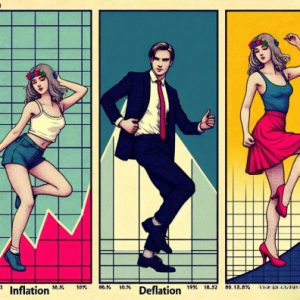
Time Capsule: Secrets of Behavioral and Mass Psychology
Dec 7, 2023
Introduction:
In the depths of human curiosity lies a desire to capture and preserve the essence of a particular era, to encapsulate the spirit of a moment in time. Please enter the time capsule, a vessel of historical significance that holds the tangible artefacts and intangible emotions of a bygone era. Time capsules have been buried, sealed, and locked away, only to be unearthed and opened years or even decades later, offering a glimpse into the past.
Beyond the physical remnants, these capsules unveil behavioural and mass psychology trends, providing invaluable insight into the collective mindset of a society. Join us on a captivating journey as we delve into the secrets locked within the time capsules of the past, exploring the behavioural and mass psychology trends that shaped our world.
Unveiling the Power of Mass Psychology:
Mass psychology, the study of how the larger group influences individual behaviour, plays a significant role in shaping financial markets. Investors’ collective fear or optimism often drives market trends and can lead to herd behaviour. One notable case study that exemplifies mass psychology in action is the stock market crash in 1929, the Great Depression. The fear and panic among investors fueled a downward spiral as everyone rushed to sell their stocks, exacerbating the collapse. Understanding mass psychology can help us anticipate market reactions and identify potential opportunities or risks.
Fear and Greed Fuel Manias: Initially, mass optimism primed markets for overvaluation during the Roaring Twenties. Substantial wealth gains amplified risk appetites as “new era” rhetoric downplayed cyclicality. Euphoria incubated unsustainable manias, discounting future risks.
Overconfidence Breeds Vulnerabilities: Margin buying using borrowed funds enlarged speculative binges vulnerable to corrections. Many invested without comprehending the frailties of positions exposed by declines. False confidence perpetuated malinvestments, aggravating eventual implosion.
Pessimism Spreads Contagiously: Early October selloffs shattered investor psychology as media stoked anxieties. Self-reinforcing panic amplified downward pressure exponentially when herd fears surmounted reason. Masses stampeded to salvage assets remaining, deepening losses.
Depression Dynamics Demonstrate Dangers: Depressed expectations stagnated productive investment for years. Cautious frugality thwarted recovery until resurgent optimism lifted sentiments via New Deal policies. Lessons highlight mass psychology’s potency, igniting or stifling recoveries through positive or negative feedback loops.
Anticipating Crowd Contradictions: Understanding herd mentalities prepares investors to evaluate distorted pricing independent of mob excess. Those recognizing Manias’ vulnerability minimized 1929’s carnage by avoiding momentum plays precariously reliant on idealized narratives maintained through unanimous compliance. Steadfast strategies concentrating on fundamentals prosper amid the crowd’s turbulence.
Behavioural Biases and Decision-Making:
Human decision-making is prone to biases, which can profoundly impact financial choices. One well-known bias is the herd mentality, where individuals tend to follow the actions of others without independent analysis. This herd behaviour can lead to market bubbles or crashes. The late 1990s and early 2000s dot-com bubble is a prime example. Investors were driven by the fear of missing out (FOMO) and bid up the prices of internet-based companies to astronomical levels. Eventually, the bubble burst, resulting in significant losses for many investors. Recognizing and mitigating these behavioural biases is crucial for sound financial decision-making.
The 1960s: The Revolution of Counterculture
In the tumultuous era of the 1960s, a time capsule was unearthed, revealing a society in the throes of change. The counterculture movement was in full swing, challenging traditional norms, advocating for civil rights, women’s liberation, and ending the Vietnam War. The time capsule contained artefacts such as protest signs, psychedelic artwork, and personal diaries filled with expressions of rebellion and defiance. This glimpse into the past showcased the powerful influence of mass psychology as individuals banded together, driven by a shared desire for societal transformation.
The 1990s: The Rise of the Digital Age
Fast forward to the 1990s, a time capsule unearthed from this era provided a window into the dawn of the digital age. The artefacts showcased the rapid advancement of technology and its profound impact on society. From early mobile phones and clunky computers to CDs and video games, these relics symbolized the birth of a new era of connectivity. The time capsule further revealed a society grappling with the implications of this technological revolution, with debates surrounding privacy, information overload, and the blurring of virtual and physical realities. It was a testament to the power of mass psychology as people embraced the digital realm while grappling with its consequences.
Mass Psychology in the Modern Era
The Herd Mentality & Emergence of Digital Social Proof
As societies grew ever more interconnected through emerging technologies, mass psychology came to the forefront of influencing individual and collective decision-making. Early Internet forums birthed communities that shaped identity through peer validation and reinforced ideologies.
On e-commerce sites, user reviews revolutionized the customer experience by crowdsourcing reputations. Shoppers scrutinized star ratings and endorsements, seeking social proof to mitigate risk amid a novel medium. By the 2020s, platforms like Amazon wielded immense influence via the court of public opinion.
The Rise of Influencer Culture
With content-sharing platforms connecting billions, Internet celebrities rose to bear seemingly credible recommendations. Trendsetters guided trends through lifestyle curation, leveraging trust among loyal followers primed to adopt tastes and purchases.
An absence of expertise posed risks as influencers hawked products and services, yet the allure of aspirational figures endorsing choices guided many. Wellness, fashion and motherhood micro-genres blossomed, magnifying communities’ sway.
The Psychology of Virality
Novel, feel-good and emotionally charged narratives captivated attention economies. Videos eliciting strong reactions rocketed to mainstream awareness through engagement algorithms that quantified validation.
With likes serving as social currency, users motivated positive feedback in pursuit of peer recognition. Stories resonating viscerally cascaded through networks at pandemic speeds, signifying cultural moments through crowd consensus.
Viral triumphs illuminated shifting interests while crystallizing new social standards overnight.
Even amid emerging insights into manipulation, mass psychology insights ensured social proof remained a guiding force as connectivity transformed human behaviours at accelerative scales. Herd dynamics shaped eras through crowd-sourced influence.
The Fragmentation of Shared Reality
As individualized media consumption rocketed, curated content streams reinforced preexisting views through selective exposure. Filter bubbles bred insularity, polarizing perspectives within partisan safe spaces untroubled by outside scrutiny.
Fragmentation of fact increased susceptibility to propaganda and pseudoscience, undermining consensus on objective realities. Alternative communities flourished online, cultivating distrust in expertise and authorities perceived as adversarial “others.”
Identity in a Fragmented World
Within a disintegrating shared culture, tribal identities provided roots of meaning and belonging. Progressive and conservative causes galvanized around single issues, pursuing righteous indignation over cooperation.
Heightened conflict rallied grassroots support yet diminished the capacity for compromise. Moderate voices found little purchase amid polarized atmospherics. Political donations concentrated resources for fringier candidates echoing radicalized bases.
The Curated Self
Curated profiles made personal brands of one’s beliefs and stances, becoming social currency within like-minded circles. Outrage clicks proliferated as moralist displays affirmed virtue, cementing ingroup favour at the cost of good faith pluralism.
Safe spaces insulated fragile convictions from challenges, reducing empathy and intergroup understanding. Tribalism supplied purpose and security within balkanized belief systems yet diminished capacities for conceding complexity and mutual understanding between adversarial communities.
The B OJ’s Interest Rate Policy: A Contrarian Approach:
One intriguing aspect of behavioural and mass psychology is its influence on central banks’ interest rate policies. The Bank of Japan (BOJ) provides a captivating case study with its contrarian approach to interest rates. In the face of global trends of rate hikes, the BOJ has maintained low rates. This decision is rooted in recognising deflationary pressures and the desire to stimulate economic growth. The BOJ showcases the interplay between financial strategy and mass psychology by defying the crowd.
The BOJ’s contrarian approach to interest rates is a strategic response to Japan’s unique economic circumstances. For decades, Japan has grappled with low inflation and even deflation, which contrasts sharply with many other developed economies. In response, the BOJ has maintained low, even hostile, interest rates to stimulate economic activity and ward off deflation.
This approach goes against conventional economic wisdom, which often advocates raising interest rates to keep inflation in check. However, the BOJ’s policy is a testament to the power of contrarian thinking. By going against the crowd, the BOJ aims to address Japan’s specific economic challenges and stimulate growth.
Mass Psychology and the BOJ’s Policy
The BOJ’s policy also reflects an understanding of mass psychology. The BOJ encourages businesses and consumers to borrow and spend by maintaining low-interest rates, stimulating economic activity. This policy is based on the understanding that interest rates influence people’s financial decisions. Lower interest rates make borrowing cheaper, which can encourage spending and investment.
However, this approach also carries risks. Prolonged periods of low-interest rates can lead to excessive borrowing and create asset bubbles. Therefore, the BOJ must carefully manage its policy to balance the need for economic stimulation with the risk of developing financial instability.
The BOJ’s contrarian approach to interest rates illustrates the interplay between financial strategy and mass psychology. By understanding the psychological impact of interest rates on economic behaviour, the BOJ has crafted a policy that addresses Japan’s unique economic challenges. This case study underscores the importance of contrarian thinking in financial strategy and the power of mass psychology in shaping economic outcomes.
Case Study: The BOJ’s Impact on Market Sentiment
The Bank of Japan’s (BOJ) interest rate policy profoundly impacts market sentiment. When the central bank signals its intent to maintain low rates, it generates optimism among investors. This optimism can lead to increased borrowing and spending, stimulating economic activity. However, if the BOJ were to change its policy stance, it could trigger market volatility and a shift in sentiment. For example, the announcement of potential rate hikes by the BOJ in 2013 sent shockwaves through the market, leading to a sharp decline in stock prices. This case study demonstrates how the BOJ’s policy decisions influence mass psychology and can have far-reaching consequences.
The BOJ’s interest rate policy doesn’t just affect the economy; it also influences investor behaviour. When the BOJ maintains low-interest rates, it encourages investors to take on more risk in search of higher returns. This can increase investment in stocks and other riskier assets, driving up prices. Conversely, if the BOJ signals that it may raise interest rates, investors may become more risk-averse, leading to a sell-off in riskier assets and a shift towards safer investments.
The BOJ’s policy decisions can also contribute to market volatility. When the BOJ changes its policy stance, it can create uncertainty in the market, leading to increased volatility. For instance, when the BOJ announced potential rate hikes in 2013, it made uncertainty about the economy’s future direction, leading to increased market volatility.
The BOJ’s interest rate policy also has implications for economic growth. By maintaining low-interest rates, the BOJ aims to stimulate economic activity by making borrowing cheaper. This can encourage businesses to invest in new projects and consumers to spend more, contributing to economic growth.
The Role of Communication and Forward Guidance:
Effective communication and forward guidance are essential for central banks to manage mass psychology and shape market expectations. Clear and transparent communication helps to align market participants’ perceptions with the central bank’s policy objectives. The U.S. Federal Reserve’s approach to forward guidance provides an intriguing case study. The Fed seeks to manage market expectations and influence investor behaviour by explicitly guiding future interest rate movements. This case study highlights the importance of central bank communication in shaping mass psychology and market dynamics.
Signalling Policy Intent
In the aftermath of the Global Financial Crisis, the Fed pioneered enhanced transparency, disclosing policy intentions to manage uncertainty. Emphasizing data dependence tied rate adjustments to measurable goals, reducing speculation. Dot plots provided conditional rate forecasts amid reflation, aligning private projections.
Calibrating Expectations
As recovery strengthened, markets anticipated taper timing while policymakers calibrated forward guidance. Subtle shifts signalled planned exits from QE while emphasizing dual mandate priorities tempered tapering fears. Gradualist scripts sought smooth transitions, avoiding taper tantrums or premature tightening.
Communication Breakdowns
Occasional mixed-messaging disrupted calibrations, like 2013’s “taper tantrum” when markets misinterpreted gradual QE reduction cues. Late 2015 also surprised markets with delayed liftoff projections amid weak inflation. Perceived inconsistencies eroded credibility, requiring prompt explanations.
Enhanced Guidance Regimes
Post-2020, the Fed augmented transparency through standing repo facilities, balance sheet disclosures and press conferences. Dot plots conveyed a patient, data-dependent bent stimulating recovery. Outreach stabilized markets during volatility, proving communication’s power in guiding psychology through crises demanding unconventional actions.
Ongoing research optimizes signalling strategies for diverse conditions, recognizing transparent guidance and responsive clarifications to build confidence through unpredictable environments where policy misinterpretations threaten stability. Communication manages expectations crucial for policy effectiveness.
The Power of Narrative and Framing:
For generations, homeownership represented quintessential aspirations of financial security and social status. Demand intensified as narratives propagated the notion of housing as the premier pathway to wealth accumulation. Central banks encouraged borrowing through loose monetary policies, furthering ownership myths.
Echo chambers hyped real estate’s inevitable upward trajectory despite historical cyclical corrections. As national home prices rose nearly 90% from 1997 to 2006, framing cemented the perception of real estate investments as low-risk treasures. With every dollar gained, euphoria swelled while prudent scrutiny sank.
Easy Credit Propels Mania
Wall Street engineered complex securities monetizing subprime loans, trusting housing’s unstoppable ascent yet dismissing systemic dangers. Narratives reframed risky lending as egalitarian opportunities. Homebuyers embraced ARM deals optimistically, convinced appreciating collateral diminished debt concerns.
When Narratives Collapse
By late 2006, the storyline fractured as home values flattened then fell. Overleveraged borrowers defaulted en masse, exposing $1.3 trillion in toxic assets infesting global portfolios. Decades of engineered dreams shattered nearly overnight as realities overwhelmed years of promotional narratives cultivated to benefit specific interests.
Markets internalize narratives; unravelling myths menaces stability. Framing influences play a role in each expansion and correction, yet sustained prosperity derives from balanced perspectives acknowledging possibilities of both prosperity and pitfalls.
Unveiling Behavioral Trends
The Fear of Missing Out (FOMO)
In the age of social media and constant connectivity, the fear of missing out (FOMO) has become a prevalent behavioural trend. Time capsules from the early 21st century unveiled a society consumed by a constant need to be in the know, to participate in every event, and to document every moment. The artefacts within these capsules showcased the rise of social media platforms, the obsession with capturing and sharing experiences, and the anxieties accompanying the fear of being left behind. Mass psychology played a significant role in perpetuating this trend, as individuals sought validation and belonging within the digital realm.
The Pursuit of Authenticity
Contrary to the FOMO trend, another behavioural pattern emerged— the pursuit of authenticity. Time capsules from the late 2010s revealed a society yearning for genuine connections and experiences. People sought to break free from the curated perfection of social media and craved fundamental, unfiltered interactions. This longing for authenticity manifested in various forms, from the rise of artisanal products and sustainable practices to the rejection of traditional beauty standards. Mass psychology influenced this trend as individuals sought to redefine their identities in a world dominated by artificiality and consumerism.
Conclusion:
Unearthing the layers of behavioural and mass psychology within financial markets unveils the forces moulding economic outcomes. The concept of time capsules becomes a tool for unravelling the complexities of human behaviour and its impact on financial decisions. Analyzing case studies and integrating the latest data allows us to navigate the intricate web of mass psychology and economic dynamics. This exploration equips us with insights to navigate the ever-evolving landscape of economics and finance.
Time capsules are windows to the past, revealing behavioural and mass psychology trends shaping our world. From the counterculture revolution to the digital age and the pursuit of authenticity, these capsules expose the evolving psyche of societies. They demonstrate the influence of mass psychology on individual behaviour. Burying time capsules becomes an ongoing ritual, emphasizing their significance as artefacts holding physical remnants and keys to understanding human behaviour intricacies.
Provocative Readings for the Curious

Stock Market Forecast for Next Week: Ride the Thrilling Trend!

Rags to Riches Stories: The Power of Perseverance and Discipline

Dow Jones Average Chart: Trading for Success

Financial Disaster Recovery Plan: Buying the Crash, Selling the Joy

Inflation vs Deflation vs Disinflation: Navigating and Winning

Unmasking Deceit: Examples of Yellow Journalism

Crude Oil Crash: Unveiling Crowd Stupidity and Opportunity

Mass Psychology Overview: Unveiling its Enigmatic Dynamics

What is Mass Psychology: Mastering the Investment Game

Strategic vs Tactical Asset Allocation: The Dominating Difference

When Inflation is, the Fed Aims to Slow the Economy

Latest Stock Market News: Making Money With Mass Psychology

People Who Went From Rags to Riches and How They Did It

Tactical Asset Allocation: Master Portfolio Strategy

Hyperinflation Can Occur When the Fed Goes Insane
SuperTrend Insights: Unmasking Market Moves with Mass Psychology



